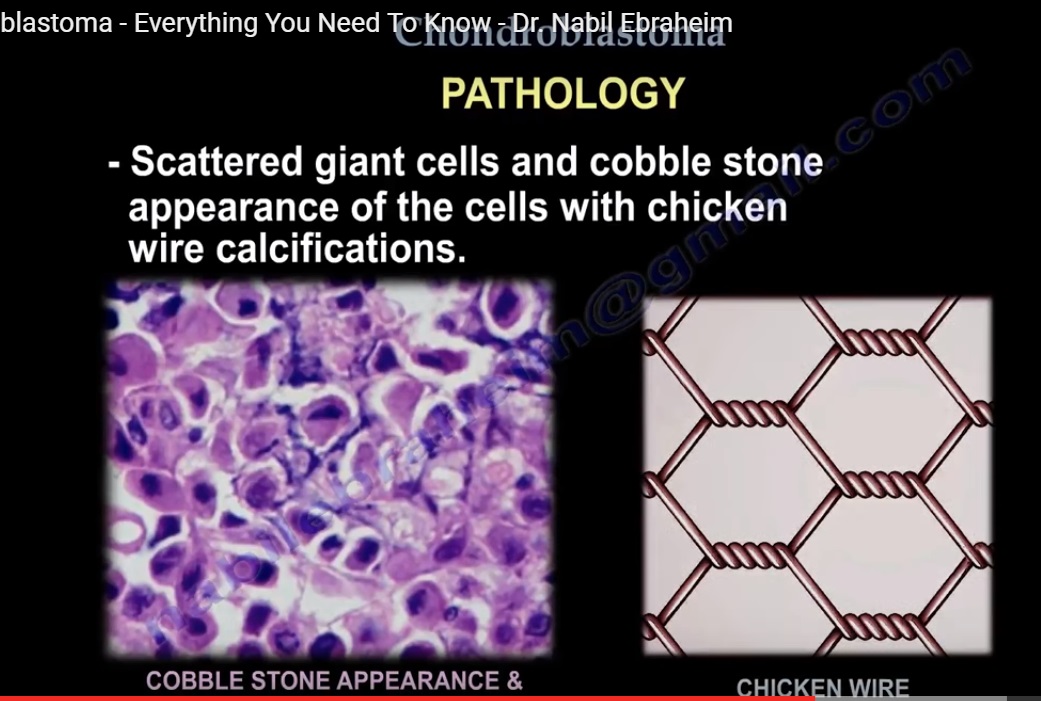Courtesy: Prof Nabil Ebraheim, University of Toledo,Ohio, USA

Introduction
• Benign, aggressive, cartilage tumour.
• More common in epiphyseal location.
• Occurs more in males.
• More prevalent in age group 10-25 years.
• Occurs more in skeletal immature persons.
DIFFERENTIAL DIAGNOSIS
OTHER EPIPHYSEAL TUMOURS
1. Clear cell chondrosarcoma
• Epiphyseal lesion
• Occurs in older age group
• More aggressive histological pattern
• Presence of large cells with central nuclei.
• Occurs in proximal humerus and proximal femur.
2. Giant cell tumour
• Occurs in older age group.
• Has uniform cells.
• Nuclei of the stroma is similar to the nuclei of the giant cells .
3. Osteomyelitis
• Brodie’s abscess
WHERE DOES CHONDROBLASTOMA COMMONLY OCCUR?
• Common location- distal femur, proximal tibia, proximal humerus
• 30% of chondroblastoma occurs around the knee followed by the proximal humerus, proximal femur and the calcaneum.
ON EXAMINATION:
• Painful
• Tumors abouts the joint, may create joint symptoms and may also cross the physes.
• 1% of these tumours metastasis to the lung.
RADIOLOGY
1. Lytic epiphyseal lesion with a sclerotic rim.
2. Sharp, well-defined borders.
3. Calcification maybe present in the matrix.
4. MRI may show extensive surrounding edema
PATHOLOGY
• Scattered giant cells and cobblestone appearance of cells with chicken wire calcification.
• 1/3 rd of the lesions may have an aneurysm bone cyst(ABC)
• The lesion is chondroid with polygonal cells.
• Lesion has a defined cytoplasm border and an oval shaped nuclei with a prominent longitudinal groove(coffee beam appearance of the nuclei)
• Chondroblasts can be distinguished from giant cell tumours by staining for the S100 protein, chondroblastoma will be reactive.
TREATMENT
1. Intralesional curettage and bone graft.
2. The recurrence rate is less than 10%.
3. Some surgeons may use adjuvant such as phenol or liquid nitrogen.
Leave a Reply